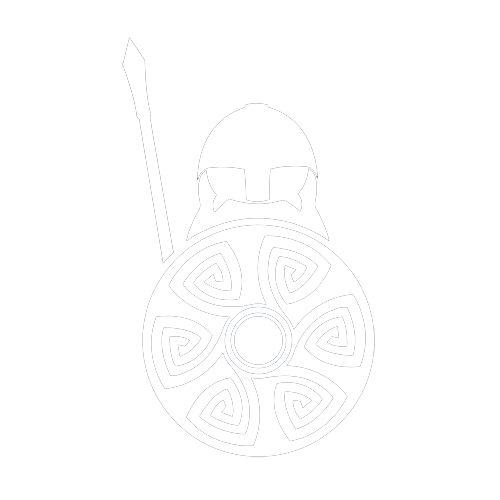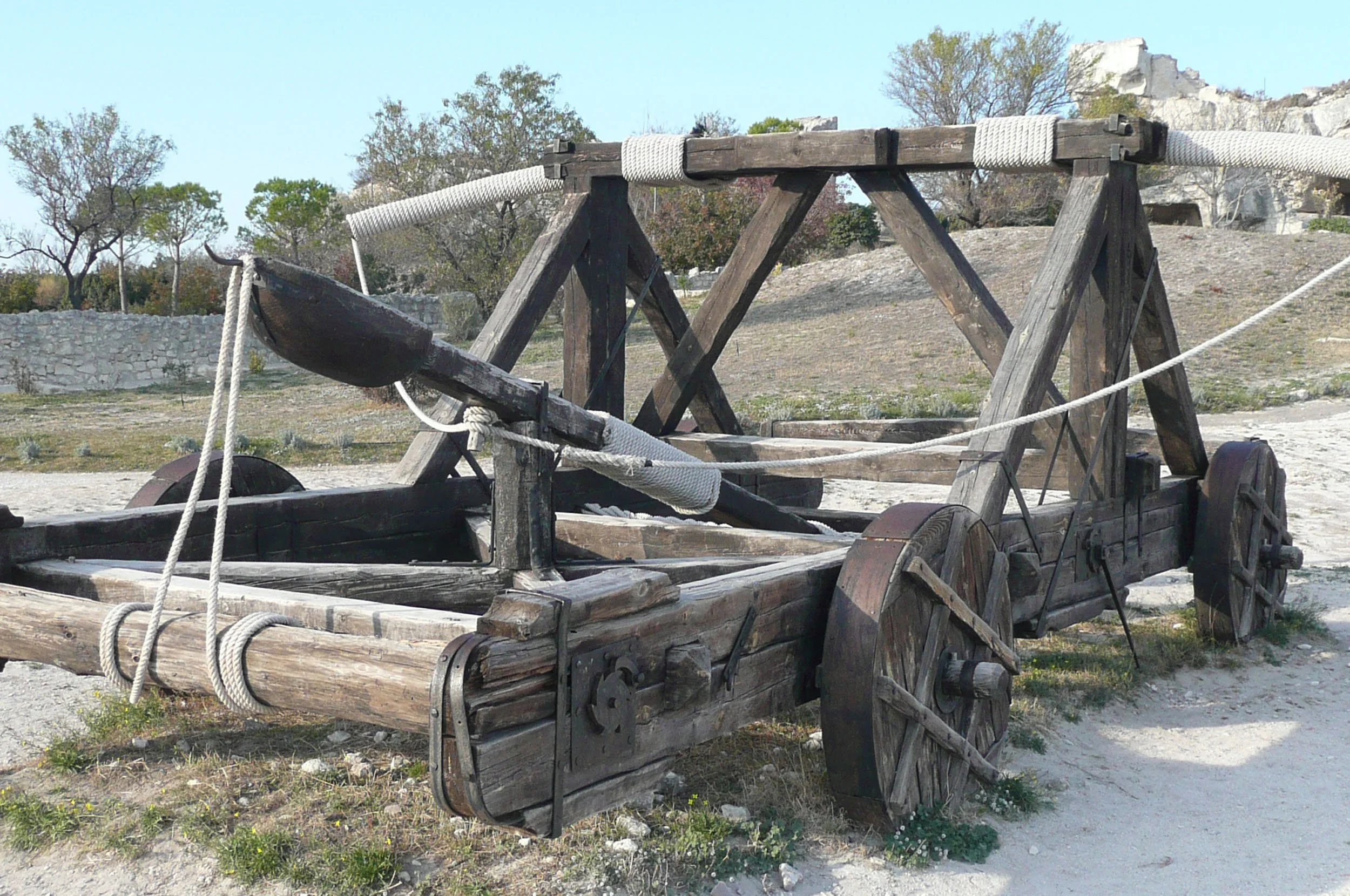The Catapult
Catapults were mainly used to lay siege to castles and fortifications during the medieval period. Like the Trebuchet, they would hurl missiles directly at the castle walls and would also launch diseased carcases over the walls into the castle itself. This would cause disease to spread rapidly amongst the castle's poor inhabitants!
The way a Catapult works varies, but for the most part it resembles the method used in a cross bow. A large 'bow' sits on top of a mobile frame of timber, with the 'bow string' reaching around the firing arm. This firing arm was hinged at one end at the base of the timber frame, and when pulled back and locked, the 'bow string' would tighten just like a cross bow does. When the lock is released, the firing arm fires forward, releasing the missile sitting in it's bucket. The range of fire was nothing like the Trebuchet, but as the Catapult was mobile, it proved a handy siege engine to bring along to a siege.
The Catapult came in a number of different types throughout the middle ages:
Ballista
The Ballista Catapult was similar to huge crossbows as mentioned above, however the projectile launched was a vast arrow. The arrow was made from timber and tipped with iron. The Ballista arrows were fired horizontally at a specific target, rather than a castle wall for instance. Ballistae were accurate but lacked in firepower, when compared to other Catapults and they were not mobile. As a result, they needed to be constructed at the battle ground, much like the Trebuchet but on a far smaller scale. These negatives made the Ballista a little harder to justify bringing it along to all the battles.
Springald
The Springald Catapult was a smaller version of the Ballista Catapult. It would fire large arrows, using a crossbow configuration, just like the Ballista, but due to it being small, it would have been used inside small spaces, like the top of towers. This made them have less firepower, and could only really be used for attacking unlucky soldiers!
Mangonel
The Mangonel Catapult was similar to the one pictured above. They had bowl or bucket shaped containers at the end of their firing arm, which was designed to hold larger projectiles. Anything from huge boulders, rotting animals, human bodies or excrement (you get the picture). They had firepower that could fling missiles up to 1300 feet, which became very useful for attacking castles and even cities. Being mobile too, as they were mostly on wheels, they could be manoeuvred into position easily and loaded up ready to fire in a short space of time.
Onager
The Onager Catapult is almost identical to the Mangonel. They were pretty much the same thing, except that the Onager appears to have been invented before the Mangonel.
Couillard
The Couillard Catapult is a smaller, lighter version of the Trebuchet. Rather than a single firing arm with counterweight swing inside a solid timber frame, the Couillard had 2 swinging counterweights that swung either side of a central post. These were much quicker to assemble than the Trebuchet, but lacked the same firepower. However, they could still cause problems for smaller castles.
Trebuchet
The Trebuchet Catapult is the king of all catapults. You can read more about the Trebuchet here, but in summary it was a vast timber frame work with a long firing arm attached to a large counterweight, pivoting on a cross beam axle. When pulled back, the fire arm could launch huge missiles up to 100 metres away, and cause devastation to castle walls. Despite it taking a long time to set up, the wait was worth it in the end, with enemies despairing at the mere sight of it!


